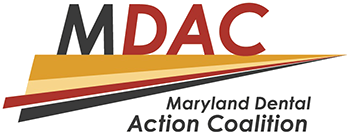Despite successful oral health literacy and education efforts, the need remains to provide more Maryland residents with accurate and easy to understand information to prevent oral disease and access affordable oral health care. Maryland’s oral health and medical professionals can use proven techniques to provide information and teach good oral health practices clearly and accurately. They can also use these skills to engage other health professionals, policymakers, and key stakeholders about the importance of oral health to one’s overall health.
In the 2011-2015 MOHP, goals and actions focused on enhancing public awareness of the linkages between oral health and overall health, and the ability of individuals to navigate the oral healthcare system, as well as promoting knowledge of oral health interventions among primary care professionals. The updated goals and actions below continue these efforts and enhance their focus on diverse populations, encouraging oral health literacy and education efforts among the public, health professionals, and policymakers.
GOAL ONE: Increase understanding of the relationship between oral health and overall health, and promote good oral health practices and access to oral health care.
- Action One: Provide accurate, consistent, culturally sensitive, relevant and easy to understand oral health messages to the public.
- Action Two: Improve the public’s understanding of the importance of oral health, the relationship of oral health to overall health, how to prevent oral disease, and how to navigate the oral health care systems to access affordable oral health care.
- Action Three: Motivate the public to view oral health as integral to their overall health status and persuade them to practice oral disease prevention behaviors for themselves and their families and to seek regular preventative oral health care.
GOAL TWO: Improve collaboration between oral health and other health and human services providers so that patients understand how to navigate the oral health care system and establish a dental home.
- Action One: Develop educational materials that help health, human service, and non-traditional support professionals work with people to improve preventative oral health behaviors, better navigate the oral health care system and establish a dental home.
Health, human service, and non-traditional support professionals include, but are not limited to:- Case managers
- Social workers
- Child care administrators and staff
- Nursing home and long-term care staff
- Older adult care providers and staff
- School nurses and school-based health center staff
- Librarians, etc.
- Action Two: Increase awareness, distribution, and use of existing oral health resources that help health, human service, and non-traditional support professionals work with people to better navigate the oral health care system and establish a dental home.
- Action Three: Hold symposia and develop educational programs and initiatives to expand collaboration between oral health and health, human services, and non-traditional support professionals so they can better help individuals maintain good oral health as well as navigate the oral health care system and establish a dental home.
GOAL THREE: Educate medical professionals and students about the importance of the oral/systemic connection and foster collaboration between medical and dental disciplines and communities.
- Action One: Develop programs and materials to educate medical professionals and students about the connection between oral and overall health.
- Action Two: Develop programs to educate medical professionals and students about how to provide simple oral health interventions and guidance, such as screenings and referrals to a dentist for pregnant women, children, adults, older adults, and people who are homeless or have special health care needs.
- Action Three: Increase medical professionals’ and students’ knowledge of why it is important to achieve optimal oral health for individuals who are medically compromised.
- Action Four: Increase medical professionals’ and students’ awareness and use of existing oral health resources, such as the MDH Office of Oral Health’s Maryland Oral Health Resource Guide, so they can better help individuals maintain good oral health as well as navigate the oral health care system and establish a dental home.
- Action Five: Increase dental professionals’ ability to identify and refer patients with undiagnosed chronic health conditions, such as hypertension, diabetes, and obesity to appropriate medical professionals for diagnosis and treatment.
